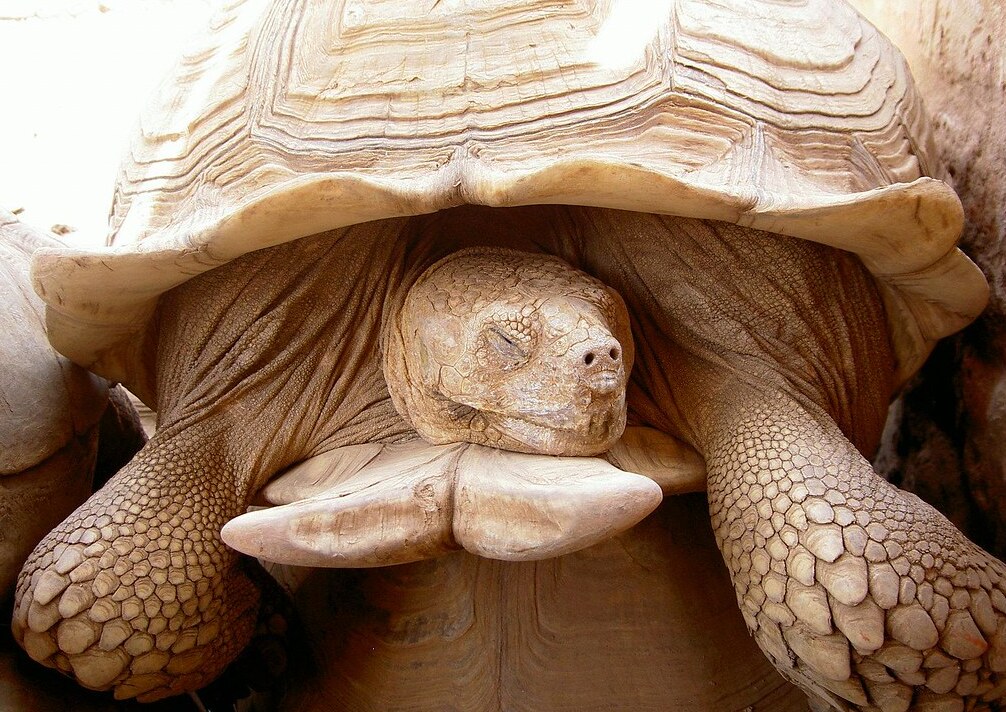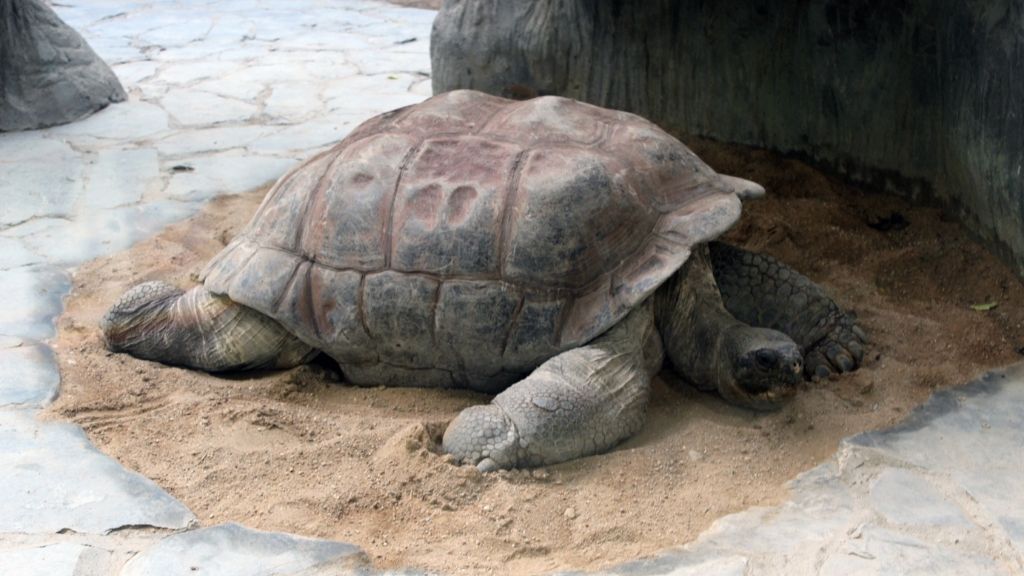Table of Contents
ToggleIntroduction
Tortoises may sleep for up to 12 hours a day, and when they do, they can be found in various positions, from a safe ball to lying on their backs and heating up under a lamp. How Long Do Tortoises Sleep? Ultimately, their work and location are determined to a significant extent by the habitat and environment in which they live. The way a particular tortoise sleeps and its patterns are not the same for all tortoises; even individuals of the same species have individual preferences.
When Do Tortoises Typically Go To Sleep?
Most tortoises are awake throughout the day and spend their nights in slumber. Nevertheless, it is common for them to doze off when they are warming themselves in the sun. If you have a pet tortoise, you have probably observed that when your tortoise is basking, it stretches out its legs, closes its eyes, and remains motionless for extended periods. When they exhibit this behavior, they are almost certainly dozing off. Tortoises in the wild will only ever sleep during the day before or after they have laid eggs, and this behavior is quite rare.
Sleeping Habit Of A Tortoise
Tortoises seek to sleep in dark places and are shielded from the elements on average, although the precise location can vary depending on the species and the individual’s disposition. These spaces can be a burrow, a covered log, or a small cave.
When determining where a tortoise sleeps, one must consider the enclosure in which it is kept. Tortoises that are housed indoors are much less likely to be able to dig their dens than those who are allowed access to the outdoors. Tortoises kept indoors need to learn to adjust to their new environment.
Because of this, providing them with improvements to their cage, such as a small artificial cave and rocks, will assist them in getting the necessary amount of sleep. Tortoises are easy prey for larger animals because of their size and the fact that they live close to the ground. As a result, they choose to find a concealed or secluded area in which they may sleep peacefully to achieve the highest possible level of protection.
If they have access to a sufficient amount of substrate, certain tortoise species will bury themselves while they are sleeping. Most people who own tortoises have observed that they will crawl under their shells while their pets sleep. In addition, one owner frequently discovers that his tortoise has been resting on its tummy. It doesn’t matter what position the tortoise sleeps in as long as they stick to their regular pattern for when they go to bed and when they wake up.
Tortoise Sleep Patterns
Tortoise sleep patterns can vary depending on species, age, environmental conditions, and individual preferences. While there is no one-size-fits-all answer to how long tortoises sleep, there are some general patterns and behaviors to consider.
Daily Napping
Diurnal tortoises may take short naps throughout the day, usually lasting for a few minutes to an hour. These naps are often observed after periods of activity and can occur basking in the sun or the shade.
Nighttime Rest
During the night, diurnal tortoises typically experience more prolonged rest periods, resembling what humans would consider a deeper sleep. However, they are not entirely inactive during this time and may still engage in some light movement or grazing.
Factors That Influence Tortoise Sleep

Several factors can influence the sleep patterns and duration of tortoises. Understanding these factors can provide insights into how to accommodate your pet tortoise’s sleep needs best and promote their overall well-being. Here are the key factors that influence tortoise sleep:
Species
Different tortoise species may have varying sleep patterns and requirements. For example, the desert tortoise (Gopherus agassizii) may engage in more estivation behavior than other species, adapting to its arid habitat.
Age
The age of a tortoise can impact its sleep patterns. Young tortoises are more active than older individuals and may require less sleep. As tortoises age, they may sleep more and be less active during the day.
Individual Variability
Just like humans, tortoises have individual preferences and behaviors. Some tortoises may be naturally more active during the day, while others may exhibit nocturnal tendencies. Understanding your tortoise’s behavior and preferences can help you provide an environment that caters to their needs.
Diet and Feeding Schedule
A tortoise’s diet and feeding schedule can influence their sleep patterns. Feeding times, especially during the day, can lead to increased activity. Additionally, the types of foods provided can impact their energy levels and overall conditioning.
Seasonal Changes
Many tortoise species experience seasonal changes in behavior and activity levels. For instance, they may become more active during the spring and summer when temperatures are warmer and food is more abundant. In contrast, colder winters may reduce some species’ activity and even hibernation or estivation.
Health and Stress
A tortoise’s health and stress levels can affect their sleep patterns. Illness, injury, or stress may lead to changes in activity and rest. It’s essential to monitor your tortoise’s health and address any issues promptly to ensure they can rest comfortably.
Social Interaction
If you have multiple tortoises in the same enclosure, their interactions can influence their sleep. Social dynamics and hierarchy within a group may affect when and how individual tortoises rest.
Environmental Enrichment
Providing environmental enrichment, such as hiding spots, basking areas, and exploring obstacles, can encourage natural behaviors and contribute to a more active and engaged tortoise during waking hours.
Do Tortoises Rest Their Heads On The Water?
Turtles, but not tortoises, are known to doze off while submerged in water. Turtles can hold their breath for roughly four to seven hours and live in water or semi-aquatic environments. Therefore, sleeping under the sea is not an unusual experience for them.
On the other hand, tortoises have a greater affinity for land and swim only a small percentage of the time. Your tortoise will float if you put it in water, so don’t worry about that. Tortoises, on the other hand, have a risk of drowning in very deep water. Therefore, you cannot reasonably anticipate that these critters will sleep there.
You may have noticed that your tortoise spends time in the water, and this is because they need to do so to keep themselves hydrated. Tortoises frequently submerge their shells in water. If this does not occur, their bodies will become dry and brittle.
Conclusion
Tortoises are primarily diurnal, meaning they are most active during the daytime and rest at night. However, they may also take short naps during the day and experience more extended periods of rest during the night. Seasonal variations, hibernation, and estivation further impact their sleep patterns as they adapt to temperature and resource availability changes.







